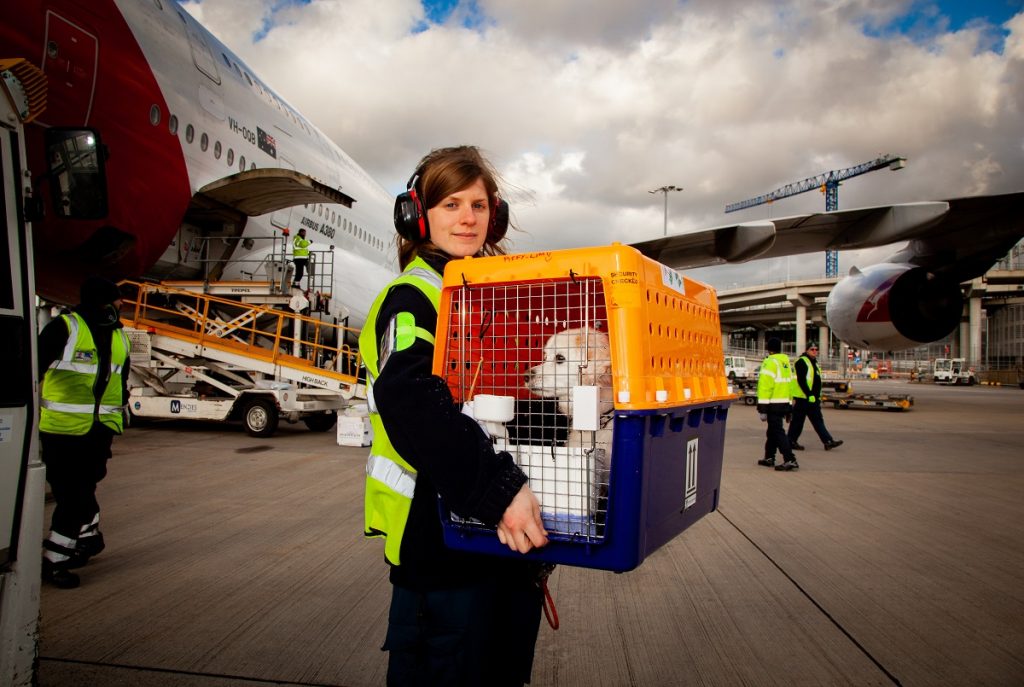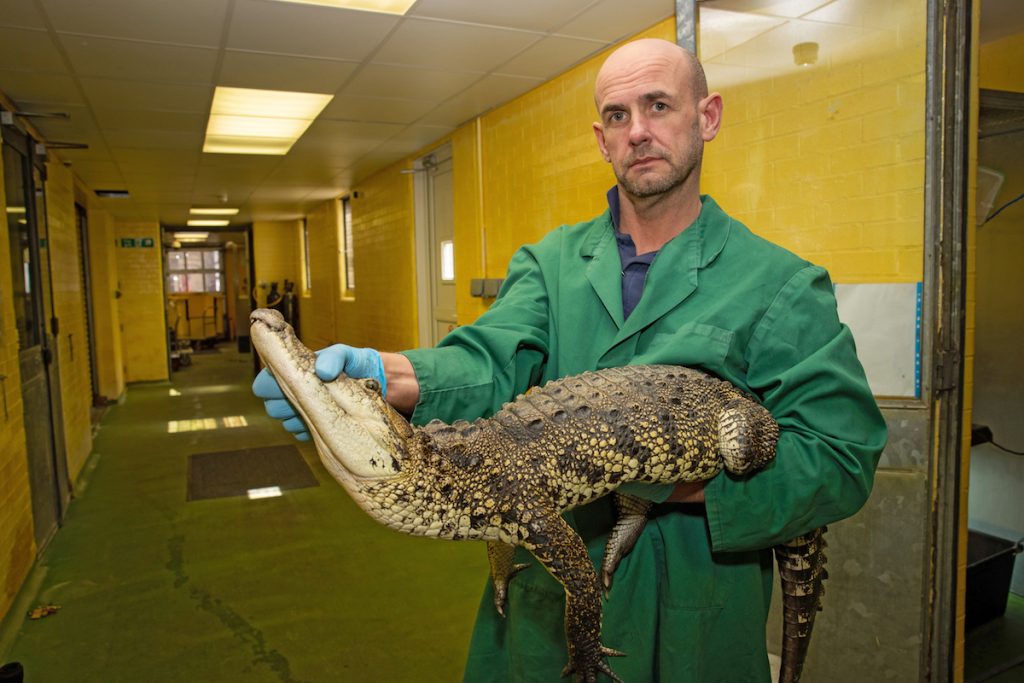If you’ve ever travelled in a jumbo jet, the chances are that while you were fretting about stowing your overweight cabin luggage, a giant rhinoceros was hitching a ride in the cargo hold beneath your feet without you ever knowing.
The deputy manager of the border control facility dubbed ‘Heathrow’s Ark’ has revealed the often overlooked work done by his team, which ensures animals arrive safely in transit.
This incredible work includes everything from handling racehorses worth millions of pounds to catching escaped swans.
Ross Hayes, deputy manager of the Heathrow Animal Reception Centre (HARC) has helped to run the UK’s largest live animal border control facility for nearly two decades.
One of his favourite wild tales took place very early on in his career, when a swan decided it was done with travel mid-transit.
He and airport security staff were forced to chase the bird around a Heathrow runway, managing to safely catch it in a blanket.

“The concrete surface has a rippling effect and sometimes waterfowl think ‘that’s a brilliant piece of water to land in – I’ll land in that’, and instead they find themselves on one of busiest runways in the world,” he said.
While the UK’s other airports can process simpler imports like cats, dogs and ferrets, HARC takes on the exotic cases, as the airport is the gateway to Europe.
They handle exotic big cats en-route to zoos in the UK and Europe, including tigers – last year transferred to London Zoo.
Australian species are a favourite among Ark staff because native species from Down Under are rarely sent overseas, Mr Hayes says.
“They are very protective of their flora and fauna, so if we see anything that comes over from Australia it’s quite a treat,” he said.
Last year, a wombat, koala and giant sharp-clawed cassowary – known as the world’s deadliest bird – came through Heathrow.
For those of us feeling job envy, Mr Hayes says that because the team is focused on biosecurity and checking for breaches of animal welfare, they don’t spend all day cuddling puppies: “It’s a hands-off approach,” he said.
However, he concedes, just like their human airline passengers, some animals do need some comfort after a very long flight.
Some first class passengers are especially delicate cargo: Legendary Melbourne Cup winning retired racehorse Black Caviar, insured for millions, has travelled through the facility, Mr Hayes reveals.
Sometimes the furry cargo arrives on jets designed to move animals en-masse with the seats removed.
If you thought your snoring seat-mate was a pain, spare a thought for some unlikely long-haul travelling companions – last year dozens of horses and alpaca arrived together sharing one flight, says Mr Hayes.

He says the largest craft are able to safely fly enormous animal cargo in the hold with passengers on the same trip.
“You can fit a rhinoceros on a plane. When you get on a flight there’s a very good chance in the hold of the craft there is a cat or dog.”
Travellers are also sharing their flights with live sharks in the hold, Mr Hayes confirms, adding: “They travel in large aquatic tanks.”
Forget two turtle doves and a partridge in a pear tree – try 34 Alpacas, 21 ferrets, and two pigs.
A Freedom of Information response from the City of London Corporation, which has owned and run HARC since 1976, has revealed the scale of the menagerie its handlers process each year.
Among them are 49,487 reptiles, 1,799 amphibians, 314 horses, 55 rabbits, 36 pet birds, 22 sheep, 18 rodents, 10 cattle, and two deer.
There were also some very glamorous visitors – more than 40million pupae were processed – and Mr Hayes says most were butterflies in their chrysalis phases destined for live exhibitions and collections.
More than 27million fish were declared, with another 41,436 living plants and coral imported to decorate their homes.
About 2.4million eggs arrived at the border in the past year, too; many of them are imported to be used in avian vaccines, Mr Hayes says.
Of course, plenty of us imported less exotic animals, with 9,818 dogs and 5,310 cats crossing the border.
While escapes are rare, sometimes Houdini-like mischief happens in the cages during transit, and flights have been known to arrive bearing a surprise greeting, Mr Hayes reveals.
“We have had scenarios where the loaders have opened the doors and there is an Alsation staring straight back at them.”







